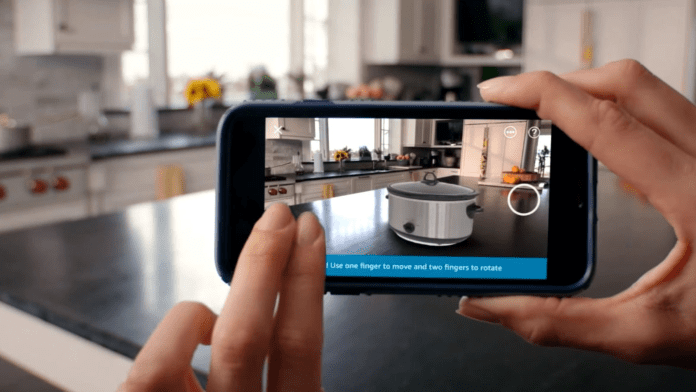Augmented Reality (AR) commerce is revolutionizing the way brands engage with consumers and drive sales. This innovative technology overlays digital information and virtual objects onto the real world, creating immersive and interactive experiences for users. As AR continues to gain popularity, brands are discovering new opportunities to leverage this technology to boost sales and fuel growth.
Enhanced Product Visualization:
One of the primary ways AR commerce benefits brands is by enhancing product visualization. Traditional e-commerce relies on static images and descriptions, leaving consumers to imagine how a product will fit into their lives. With AR, customers can virtually place products in their own environment using their smartphones or AR glasses. This allows them to see how furniture will look in their living room, how makeup will appear on their skin, or how a new car will fit in their driveway. By providing a more realistic and immersive shopping experience, brands can reduce hesitation and increase conversion rates.
Personalized Shopping Experiences:
AR commerce also enables brands to offer highly personalized shopping experiences. By analyzing user data and preferences, brands can tailor AR content to individual customers. For example, a clothing retailer could use AR to create a virtual dressing room where customers can try on outfits that match their style and size. Additionally, AR can recommend complementary products or accessories based on previous purchases and browsing history. These personalized experiences not only enhance customer satisfaction but also drive cross-selling and upselling opportunities.
Interactive Product Demos:
AR commerce allows brands to create interactive product demos that go beyond traditional marketing. Consumers can engage with products in a hands-on manner, turning, zooming, and exploring them from various angles. This level of interaction builds trust and confidence in the product, reducing the need for in-person shopping experiences. For example, the cosmetics industry has embraced AR by offering virtual makeup try-ons. Customers can see how different shades of lipstick or eyeshadow look on their own face in real-time, making informed purchasing decisions.
Solving Real-World Problems:
Some brands are using AR commerce to address real-world problems. For instance, home improvement retailers can offer AR tools that help customers measure spaces accurately and visualize how various products, such as flooring or paint, will appear in their homes. This not only simplifies the decision-making process but also reduces the likelihood of costly mistakes. By providing solutions to common consumer challenges, brands can differentiate themselves and gain a competitive edge in the market.
Augmented Marketing Campaigns:
AR is not limited to the shopping experience itself; it can also be integrated into marketing campaigns. Brands can create interactive AR advertisements that capture users’ attention and encourage them to explore products further. These campaigns generate buzz and excitement around the brand, driving traffic to e-commerce platforms and increasing sales. Moreover, AR can bridge the gap between the online and offline worlds by allowing customers to scan physical products or advertisements to access exclusive content or discounts.
Reduced Return Rates:
One of the biggest challenges in e-commerce is high return rates due to mismatched expectations. AR commerce can significantly reduce this issue. When customers can virtually try products before purchasing, they are less likely to be disappointed when they receive their orders. As a result, brands can experience lower return rates and higher customer satisfaction levels. This, in turn, contributes to cost savings and improved overall profitability.
Overcoming Adoption Hurdles:
While the potential benefits of AR commerce are vast, brands must also address adoption hurdles. This includes ensuring the accessibility of AR experiences across different devices and platforms, educating customers about how to use AR features, and safeguarding user privacy and data. Brands that successfully navigate these challenges can position themselves as pioneers in the AR commerce space and gain a competitive advantage.
Final Thoughts:
AR commerce presents a wealth of opportunities for brands to drive sales and growth. By enhancing product visualization, personalizing shopping experiences, offering interactive demos, solving real-world problems, and creating augmented marketing campaigns, brands can engage customers in new and exciting ways. Additionally, the potential for reduced return rates and increased customer satisfaction further bolsters the case for adopting AR commerce. As technology continues to evolve and consumers become more accustomed to AR experiences, brands that embrace this innovative approach are likely to thrive in the evolving landscape of e-commerce.





